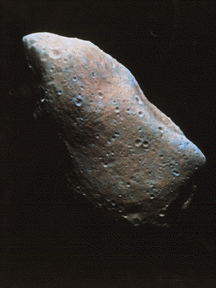Galileo image of Gaspra
(29 October 1991)
Click on image for full size
NASA/JPL
Asteroids
Asteroids are small bodies that are believed to be left over from the beginning of the solar system 4.6 billion years ago. They are rocky objects with round or irregular shapes up to several hundred km across, but most are much smaller.
More than 100,000 asteroids lie in a belt between Mars and Jupiter. These asteroids lie in a location in the solar system where there seems to be a jump in the spacing between the planets. Scientists think that this debris may be the remains of an early planet, which broke up early in the solar system. Several thousand of the largest asteroids in this belt have been given names.
The chances of an asteroid colliding with Earth are very small! But some do come close to Earth, like Hermes (closest approach of 777,000 km).
You might also be interested in:
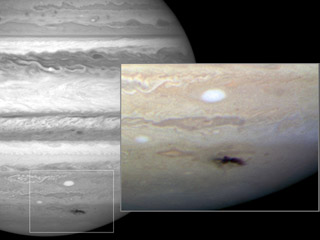
Anthony Wesley is an amateur astronomer in Australia. On the night of July 19, 2009, Wesley noticed a dark spot on Jupiter that hadn't been there before. He had discovered the remains of a huge impact
...more
A moon was discovered orbiting the asteroid, Eugenia. This is only the second time in history that a satellite has been seen circling an asteroid. A special mirror allowed scientists to find the moon
...more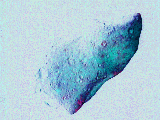
The first asteroid collection mission has been set. Japan and the United States will join together in the MUSES-C mission. The mission is to be launched in January 2002 from Japan. The spacecraft will
...more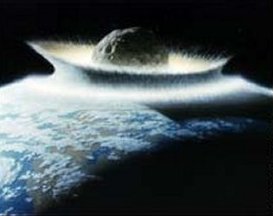
Scientists just created an asteroid map that shows over 900 asteroids that could someday collide with Earth. Any asteroid 1 kilometer long or larger is considered a danger. Even one of these smaller space
...more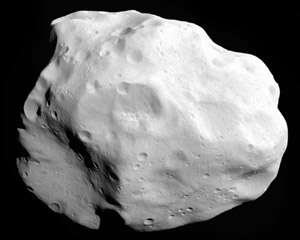
Lutetia is a medium-sized asteroid. It orbits the Sun in the main asteroid belt between the planets Mars and Jupiter. Its official name is "21 Lutetia" because it was the 21st asteroid discovered. Lutetia
...more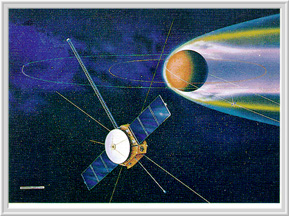
After a long, slow struggle, the Japanese space program is taking off! Japan's space program started with the launching of pencil-sized rockets in the 1950's. They struggled to finally build a rocket that
...more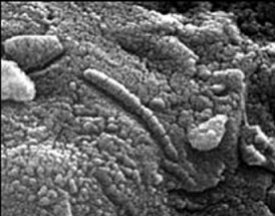
A recent study shows there is a possibility that we came from Mars! No, that doesn't mean a spaceship flew here and dropped us off. Rather, scientists say chunks of rock were thrown off the Red Planet
...more


